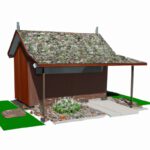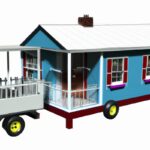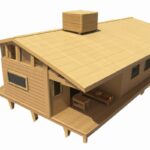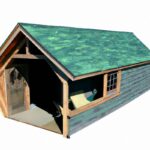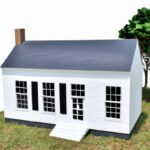Key Takeaways:
- Implement a composting toilet system to efficiently handle sewage in a Tiny House.
- Utilize compact waste management solutions, such as recycling and composting, to effectively handle waste in a Tiny House.
- Consider sustainable options like greywater recycling systems to minimize water waste in a Tiny House.
- Properly disposing of hazardous materials is crucial when managing waste and sewage in a Tiny House.
Are you ready to tackle one of the not-so-glamorous aspects of tiny house living? Today, we’re diving into the world of waste and sewage management in tiny houses, an essential topic for every tiny house enthusiast.
Proper waste and sewage management is not only crucial for maintaining a clean and healthy living environment but also for complying with legal requirements and codes.
In this article, I will guide you through different systems available for waste and sewage management, help you choose the right one for your tiny house, provide tips for installation and maintenance, and share efficient waste management techniques. So, if you’re eager to learn how to handle waste and sewage in your tiny house, let’s get started!
Methods | Advantages | Disadvantages |
Bucket System | – Simple and inexpensive – Easy to maintain – Does not require water | – Needs frequent emptying – Odor can be a problem |
Composting Toilet | – Produces nutrient-rich compost – No water usage – Minimal odor | – Requires regular maintenance – Initial setup cost |
Incinerating Toilet | – Completely eliminates waste – No water usage – Can also provide heat | – High cost – Requires a power source – Not suitable for all locations – Ash disposal required |
Greywater Recycling | – Helps conserve water – Reuses water for irrigation – Can reduce strain on septic systems | – Requires separate plumbing – Requires treatment before reuse |
Septic System | – Handles all waste water – Requires minimal maintenance | – Expensive installation cost – Requires regular pumping – May have environmental impacts if not properly maintained |
Importance of Proper Waste and Sewage Management
Health and Environmental Implications
Proper waste and sewage management in a Tiny House has significant health and environmental implications.
When waste and sewage are not managed effectively, it can lead to the spread of diseases and contamination of water sources.
This can result in serious health issues for the inhabitants and surrounding communities.
Additionally, improper waste disposal can contribute to environmental pollution, including air pollution from incinerators and water pollution from sewage leaks.
It is crucial to prioritize waste and sewage management to protect both our health and the environment.
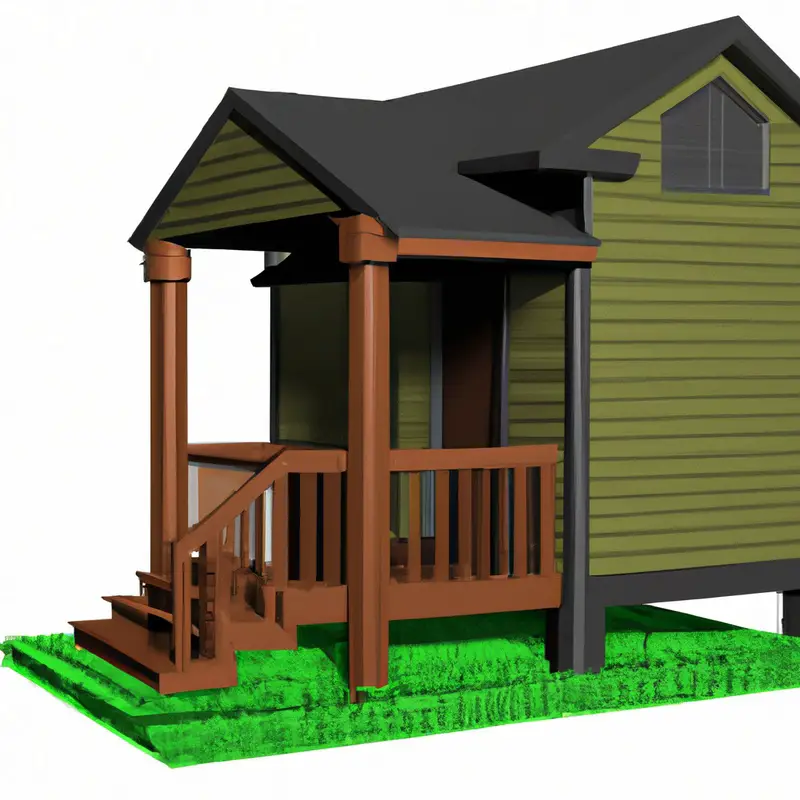
Legal Requirements and Codes
Legal requirements and codes for waste and sewage management are essential to ensure public health and environmental protection. These regulations vary depending on the location, but typically cover aspects such as the type of waste disposal system allowed, maximum waste capacity, and proper maintenance.
It is crucial to research and comply with these requirements to avoid penalties and potential harm to the environment.
Engaging with local health departments or building authorities can provide guidance and clarity on the specific legal obligations for waste and sewage management in your area.
Different Systems for Waste and Sewage Management
When it comes to waste and sewage management in a tiny house, there are several different systems you can choose from. Here are some options:
- Composting Toilets: These toilets convert human waste into compost that can be used in gardening.
- Incinerating Toilets: These toilets burn waste into ash, reducing it to a small volume that can be safely disposed of.
- Chemical Toilets: These toilets use chemicals to break down waste and control odors.
- Septic Systems: These systems are more common in larger tiny houses and use a tank buried in the ground to collect and treat waste.
Each system has its pros and cons, so it’s important to choose one that fits your needs and the regulations in your area.
Choosing a System for Waste and Sewage Management
Composting Toilets
Composting toilets are a popular choice for waste and sewage management in tiny houses.
These systems use natural processes to break down human waste into compost, which can be used as fertilizer.
They are environmentally friendly, as they save water and reduce pollution.
Composting toilets can be installed easily in small spaces and require minimal maintenance.
It is important to follow proper guidelines for use and ensure regular composting to avoid any unpleasant odors.
Consider composting toilets for an efficient and sustainable waste management solution in your tiny house.
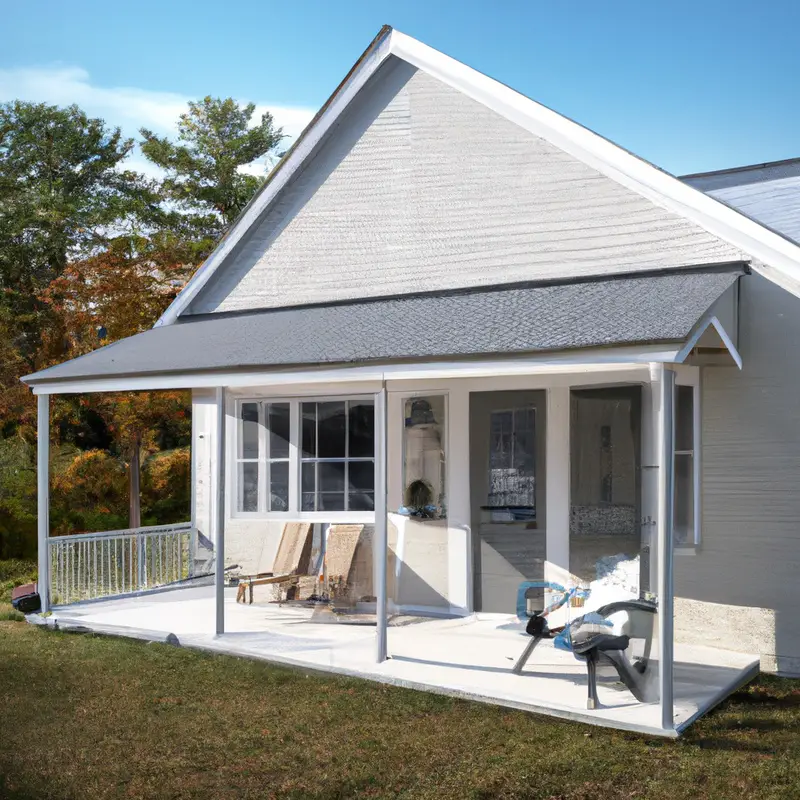
Incinerating Toilets
Incinerating toilets are a unique option for waste and sewage management in a tiny house.
They use high heat to burn waste, reducing it to ash and minimizing the need for water or chemicals.
These toilets are compact and self-contained, making them ideal for small spaces.
They also eliminate the need for a traditional septic system, simplifying installation and maintenance.
However, it’s important to properly dispose of the ash and follow local regulations.
Incinerating toilets are a convenient and eco-friendly solution for waste management in tiny houses.
Chemical Toilets
Chemical toilets are a popular choice for waste and sewage management in tiny houses. These toilets use chemicals to break down waste and control odors.
They are compact, portable, and require minimal water for flushing.
Chemical toilets are easy to install and maintain, making them ideal for small spaces. However, it is important to regularly empty and clean the holding tank, and dispose of the waste properly according to local regulations.
Additionally, be mindful of the chemicals used in the toilet and choose eco-friendly options whenever possible.
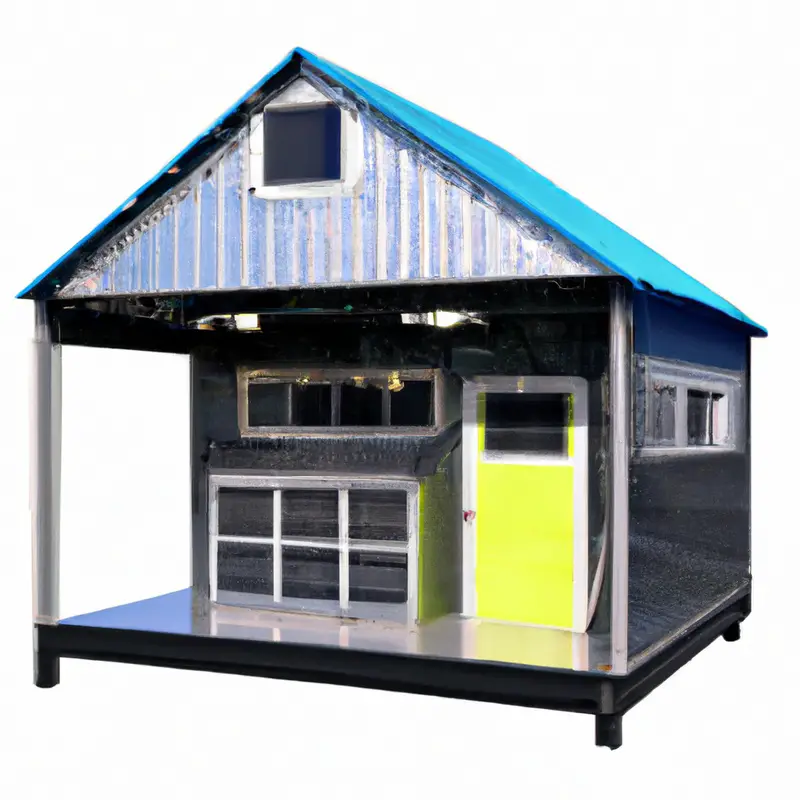
Septic Systems
Septic systems are a common choice for waste and sewage management in tiny houses.
They work by collecting and treating wastewater using a combination of natural processes and anaerobic bacteria.
The system consists of a septic tank and a drainfield.
The septic tank separates solids from liquids, while the drainfield allows the wastewater to be absorbed into the ground.
To ensure the proper functioning of a septic system, regular inspections and maintenance are essential.
This includes pumping the tank periodically and being mindful of the types of waste and chemicals that are disposed of into the system.
Installation and Maintenance of Waste and Sewage Systems
Proper Ventilation and Plumbing
Proper ventilation and plumbing are essential for effective waste and sewage management in a tiny house. Adequate ventilation helps to eliminate odors and prevent the build-up of harmful gases.
Installing exhaust fans or windows can help achieve good airflow.
Plumbing is equally important as it ensures that waste and sewage are properly disposed of. A well-designed plumbing system should include proper drainage and airtight connections to prevent leaks and contamination.
Regular inspections and maintenance are key to keeping the system functioning smoothly.
Regular Cleaning and Maintenance
Regular cleaning and maintenance are essential for proper waste and sewage management in a tiny house.
Here are a few key tasks to keep in mind:
- Clean the composting or chemical toilet regularly to prevent odors and maintain hygiene.
- Empty the waste containers or tanks as needed, following the manufacturer’s instructions.
- Regularly inspect and maintain the plumbing system to avoid leaks and blockages.
- Clean and disinfect the bathroom and waste disposal area regularly to minimize bacteria growth.
- Dispose of waste and sewage in accordance with local regulations and guidelines.
- Stay proactive and schedule routine inspections and maintenance to address any potential issues promptly.
Disposal of Waste and Sewage
Disposing of waste and sewage in a Tiny House requires careful consideration to ensure proper sanitation and environmental responsibility.
One common method is to connect to a public sewer system if available nearby.
Alternatively, you can use a septic system, which involves a tank and drain field.
Another option is to utilize composting or incinerating toilets, which minimize environmental impact.
It’s essential to follow local regulations and codes for waste and sewage disposal to maintain a healthy living environment.
Regular cleaning and maintenance are crucial for efficient and odor-free waste management in a Tiny House.
Tips for Efficient Waste and Sewage Management in a Tiny House
Reduce, Reuse, and Recycle
One effective way to manage waste and sewage in a Tiny House is to practice the principles of Reduce, Reuse, and Recycle.
- Reduce: Minimize waste production by making conscious choices. Avoid single-use items, such as plastic water bottles, and opt for reusable alternatives.
- Reuse: Find creative ways to repurpose items. For example, repurpose glass jars as food storage containers or use old t-shirts as cleaning rags.
- Recycle: Establish a recycling system in your Tiny House. Sort and separate recyclable materials like paper, plastic, and glass. Take them to a nearby recycling facility whenever possible.
Proper Waste Sorting and Segregation
Proper waste sorting and segregation is a key aspect of efficient waste management in a tiny house.
It involves separating different types of waste into designated categories, such as recyclables, organic matter, and non-recyclables.
By doing so, you can ensure that recyclable materials are properly recycled, organic waste is composted, and non-recyclable waste is disposed of correctly.
This not only reduces the amount of waste sent to landfills but also helps conserve resources and protect the environment.
Remember to familiarize yourself with local recycling guidelines to ensure proper waste sorting and disposal.
Using Eco-friendly and Biodegradable Products
Using eco-friendly and biodegradable products is essential for sustainable waste and sewage management in a tiny house. These products have minimal impact on the environment and reduce the pollution caused by traditional chemical-based products.
Biodegradable toilet paper, cleaning agents, and detergents can be easily decomposed, preventing the accumulation of harmful substances in the surroundings.
Additionally, eco-friendly products are often made from renewable resources and do not contribute to deforestation or depletion of natural resources. By choosing these products, you can actively contribute to preserving the environment and creating a healthier living space.
Educating Inhabitants on Responsible Waste Management
In order to ensure responsible waste management in your tiny house, it is important to educate yourself and your fellow inhabitants. Here are some tips for educating inhabitants on responsible waste management:
- Raise awareness: Talk to your housemates about the importance of responsible waste management and its impact on the environment.
- Provide clear instructions: Clearly explain the waste management practices and systems in place in your tiny house, including proper sorting and disposal methods.
- Encourage participation: Involve everyone in the process by assigning responsibilities and rotating tasks, such as composting or recycling duties.
- Offer resources: Share educational materials, such as brochures or online articles, to further educate and inform inhabitants about responsible waste management practices.
- Lead by example: Set the bar high by following responsible waste management practices yourself, and inspire others to do the same.
By actively engaging and educating inhabitants on responsible waste management, you can create a culture of sustainability and contribute to a cleaner and greener environment.
Final Verdict
Proper waste and sewage management is of utmost importance in a tiny house.
The health and environmental implications cannot be ignored, and there are legal requirements and codes that must be followed.
Choosing the right system for waste and sewage management is crucial, whether it’s composting toilets, incinerating toilets, chemical toilets, or septic systems.
Installation and maintenance should not be overlooked, with proper ventilation, plumbing, cleaning, and disposal practices.
Implementing efficient waste and sewage management in a tiny house involves reducing, reusing, and recycling, proper waste sorting, using eco-friendly products, and educating inhabitants.
By following these guidelines, you can ensure a clean and sustainable living environment in your tiny house.

